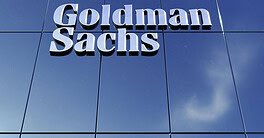With more people holding a smartphone than a bank account, the MENA region offers giant opportunities for telcos offering payments and money-transfers.

In war-torn Iraq, finding a bank or an ATM can be a hassle. Yet, telecom operators process millions of transactions each year. All you need is a phone.
“The opportunity is very visible, because mobile penetration is above 100%, while 89% of the population is unbanked,” says Yazen Altimimi, CEO of Zain Cash, a mobile-payment service developed by Kuwaiti telecom provider Zain Group and fintech partner FOO.
In 2015, Zain Cash was the first licensed mobile wallet to launch in Iraq. Today it is practically a full-fledged digital bank, offering QR-code payment services, money transfer, e-payments, funds disbursement, bill settlement and merchant online/offline payment. With a network of more than 3,000 local agents, Zain Cash claimed more than $300 million worth of transactions last year—double the amount recorded in 2017.
“Basically we are leapfrogging. The number of transactions is skyrocketing. We are seeing double-digit growth month over month,” says Altimimi.
When Zain Cash started operating, the Central Bank of Iraq saw it as an opportunity to promote financial inclusion. “Our competition is not banks; it’s cash,” adds Altimimi, who just signed a partnership with two local banks.
“Financial technology is continuously changing clients’ interaction with banks in ways that we could not have conceived a decade ago,” says Faisal Al Haimus, CEO of Trade Bank of Iraq. “Mobile wallets have the highest growth potential in the payment market. We don’t see telecom operators providing this service as competition. There is enough space for them and the banks to grow together, leveraging their competence in their core areas for a win-win service-delivery model.”
At this stage, success stories like Zain Cash remain rare in the Middle East. But there are strong opportunities and an appetite for more telcos to step into financial services.
“Today, the bulk of Fintech innovation and investment in the MENA [Middle East and North Africa] region is centered around mass-scale platforms that can create efficiencies for payment and money transfer,” says Philip Bahoshy, CEO of Magnitt, a Dubai-based entrepreneurship and investment network. “Everyone has got a mobile phone, so it’s the perfect channel to solve payment issues.”
Is MENA the New Africa?
With the world’s second-largest youth population—and 48% of men and 65% of women unbanked, plus soaring smartphone and internet penetration rates—the MENA region looks very similar to sub-Saharan Africa, another fast-growing mobile-payments market.
But taking a closer look, the region stretching from Morocco to Iraq might not present the same opportunities as Africa. Some countries—such as Egypt, Iraq and Yemen—are highly underbanked and offer opportunities to leapfrog; while others, like the Gulf Cooperation Council (GCC) countries, already have long-established banking systems.
In addition, the MENA telecom sector is rigid. Most countries allow a very limited number of players and apply strong state controls, requiring local or state majority-share ownership of the operators, or through restrictive legislation. And many GCC countries ban Voice over Internet Protocol (VoIP) services such as Skype, WhatsApp and Viber. As a result, rich MENA telcos have little competition and, therefore, little incentive to transform.
“Many internet markets in MENA countries have monopolies or entry barriers … which limit innovation across the whole internet value chain,” the World Bank states in the October MENA Economic Monitor.
Apart from Orange, formerly France Telecom, British Vodafone and South Africa–based MTN, the MENA telecom market remains closed to global players. Similarly, local providers tend to keep operations in their region. Since Kuwait’s Zain sold its African business to Indian Bharti Airtel in 2010, the United Arab Emirates’ Etisalat remains the only Middle Eastern group with a presence in sub-Saharan Africa, where it operates under the Moov moniker.
Although MENA telcos may be isolated in a protectionist environment, they are not completely immune to global trends.
Diversifying to Remain Relevant
With the emergence of Microsoft’s Skype, Facebook, Whatsapp, Viber and other over-the-top media services (OTTs) that offer free calls and messaging, profits are shrinking.
“When was the last time you sent an SMS? How often do you jump on regular calls?” says Hassan Mansour, general manager at Monty Mobile, a company that provides value-added services for telecom operators, such as application-to-person [A2P] secure SMS services. “You use OTTs like everybody. Since 2012, this represents huge revenue losses. Telecom providers are suffering. Data consumption has increased significantly, but it does not compensate for the losses [to free services], so telcos are now looking for anything that can bring them new revenues.”
MENA telcos know that to remain relevant they must diversify in the digital area. To enhance their chances at creating the best possible products, they are starting to sponsor innovation with venture capital.
In 2016, Saudi Telecom Company (STC) took a 10% stake for $100 million in ride-sharing outfit Careem, which was recently bought by Uber. And in 2017, STC set up STC Ventures, a $500 million investment branch specializing in digital payments and fintech. STC Ventures has invested in nine companies so far. Digital payments is another segment that STC is tapping, with the recent launch of Viva Cash mobile wallet in Bahrain and similar services coming to Saudi Arabia.
In 2014, Qatar’s Ooredoo co-invested with Rocket Internet to create Asia Pacific Internet Group, which has invested in nine start-ups so far. Kuwait’s Zain followed a similar strategy by investing in existing venture capital funds Wamda Capital, Middle East Venture Partners and Colle Capital Partners. Last year, Orascom and Zain also created their own $48 million tech fund through their Lebanon subsidiaries, Alfa and Touch.
For start-ups, partnering with a telco provides access to a large customer base, helps with billing processes and provides other advantages, such as mass-scale data management and marketing. Telcos, on the other hand, are pushing for the formation of an ecosystem that favors fintech and information and communication technology, to create a pool of strategic partners to choose from when the time comes.
At this stage, such investments remain very muted relative to the rest of the world. The most active MENA telcos typically have invested in just a few start-ups so far. By comparison, Qualcomm Ventures in the US has already backed more than 200 companies.
Global trends show telcos increasingly involved in inorganic growth through mergers and acquisitions (M&A). According to Thomson Reuters, global telecom and media M&A activity is exploding, reaching a historic $300 billion in 2018, six times the amount recorded in 2017. Yet the MENA region accounts for only about 1% of deals.
“Choosing inorganic growth alone will not suffice,” states global services firm PwC in a 2017 report. “Operators have to pay close attention to post-merger governance and integration models. Telecom operators should ensure that the typically nimble and innovative nature of target technology companies is preserved, and that it does not get diluted by the culture and problems of the acquirer.”
Will a MENA telco buy a bank, as has already taken place in France and Pakistan? Not yet. But the appetite is there. With the development of 5G infrastructure and smart cities, MENA telcos are bound to play an increasing role in digital transformation.
|
Provider |
HQ LOCATION
|
Branches |
| Ooredoo | Qatar | Algeria, Iraq, Kuwait, Oman, Palestine, Qatar, Tunisia |
| United Arab Emirates Zain | Kuwait | Bahrain, Iraq, Jordan, Kuwait, Lebanon, Morocco, Saudi Arabia |
| Global Telecom Holding (formerly Orascom) | Egypt | Algeria, Lebanon |
| Du | UAE | UAE |
| Etisalat | UAE | Egypt, Morocco, Saudi Arabia, United Arab Emirates |



